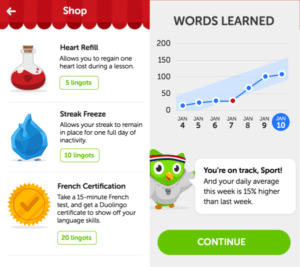There’s a lot of hype surrounding gamification and growth hacking these days.
However, it almost seems like it should be used to engage existing users instead of acquiring and engaging new ones.
And while gamification marketing is powerful, sales gamification are even more so.
In this article, we’ll take a look at 3 special gamification examples that allowed companies to grow their user base to new heights. And for extra points, we’ll also draw lessons that can be applied to growth hacking in general.
Let’s start playing!
Gamification Example no.1: LinkedIn
We don’t know if you noticed, but everything LinkedIn does is gamified, which makes it one of the best gamification examples ever.
Even though it’s a B2B and professional platform, LinkedIn knows a lot about user engagement.
The first thing that happens is that users are prompted to import their contacts for special completion points.
This, in turn, sends an email to every contact the user has – even if they don’t have LinkedIn. This allows LinkedIn to reach a new user base that hasn’t signed up for their platform.
Every LinkedIn profile has a profile strength level.
By posting status updates and updating their bios, LinkedIn users have to participate in the game to be prioritized in the search.
Endorsements as Badges and Leaderboards
One of the most important parts of LinkedIn’s gamification growth hacking strategy are skills and endorsements.
They’re implemented through badge-like features that encourage users to communicate with each other, and reach out to people who can endorse their skills.
So if a software engineer, for example, listed “PHP” as one of their skills, they turn to their boss to endorse them. And if their boss isn’t on LinkedIn, it’s in our engineer’s best interest to invite them to join the platform.
And as a cherry on top, LinkedIn shows users how many people viewed their profile (and their general profile view ranking) – and how many more could view it, if only they take the necessary actions.
Gamification Example no.2: Dropbox
Dropbox, like LinkedIn, knows that gamification is great for engagement because of intrinsic motivational factors (e.g. self-advancement).
However, rewards don’t hurt, either.
Dropbox users start being rewarded for engagement from the moment they sign up for Dropbox.
In the onboarding phase (where it’s crucial to have users engage with our platforms), users are rewarded with extra storage capacity if they link their Dropbox account to social media like Facebook.
Then, users share info about Dropbox on their social media for extra storage, effectively allowing Dropbox to reach new customers from their existing customer base.
Every action has a reaction, and users are specially modified to take part in Dropbox’s gamified onboarding process because it rewards them with every step that they take.
Additionally, users can take 7 steps to get started with Dropbox (as though they’re going on a quest) and get the title of a “Dropbox Guru” once they’ve completed all seven.
One of the Best Gamification Examples: Duolingo
Our third and final example is definitely one of the best gamification examples out there: Duolingo.
Essentially a language-learning app (just like Rosetta Stone), it attracted more users than similar apps because of gamification.
Everything about Duolingo is gamified, and it starts with earning points for lessons that the users take.
Each point gives the user a lingot, an in-game currency that can, later on, be used to unlock special rewards: lessons like pick-up lines, character skins, and much more.
It’s in the user’s best interest to keep accessing the app daily because they get a winning streak. If they miss out on a day, they’ll lose it and have to start all over again, which is another one of great growth hacking gamification examples.
When they reach a certain milestone, Duolingo also gives users rewards in the form of achievement badges that they can share with friends.
Every time they access the panel with lessons, users can see how much they’ve improved through the lesson skill bar (properly gamified in style with the achievement badges). This keeps them constantly engaging with the platform.
Finally, Duolingo hacks their growth in users by inviting people to share their achievements with their friends, who can then join the platform and compete.
Each language has a leaderboard showing who the best user is (most active), and users can communicate in the social area.
Finally, an individual user’s Duolingo profile becomes a badge of honor. Listing their achievements, rankings, and their progress goes a long way towards making them engage with the platform more, and share their results with the world.
So while Duolingo plays on the intrinsic motivational factors in order to retain its users, they use external factors like competition to grow their user base.
And who doesn’t want to brag about their achievements?









